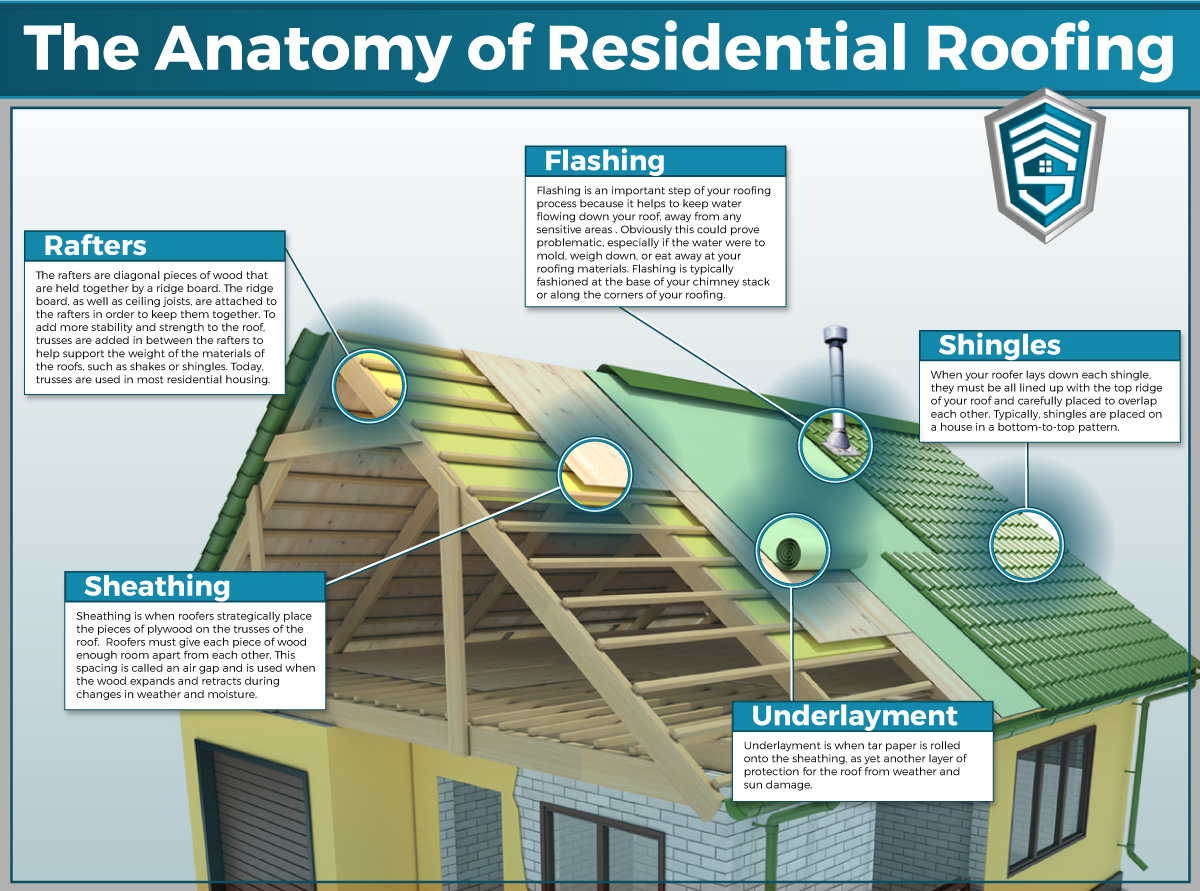Neglecting Roof Ventilation Can Result In Expensive Damages; Discover Important Aspects That Guarantee A Successful Installation And Safeguard Your Financial Investment
Neglecting Roof Ventilation Can Result In Expensive Damages; Discover Important Aspects That Guarantee A Successful Installation And Safeguard Your Financial Investment
Blog Article
Write-Up Written By-Lassiter Rosa
When you're dealing with a roof covering job, you could not think much regarding roofing ventilation, but it's more important than you realize. Effective ventilation helps control temperature level and dampness in your attic, avoiding issues like mold and mildew and architectural damage. By recognizing how to create and set up a well balanced air flow system, you can boost power efficiency and lengthen the lifespan of your roof products. So, what are the key elements to take into consideration throughout setup that can make all the difference?
Value of Roofing System Ventilation
Roofing system ventilation plays an important duty in maintaining the overall wellness of your home. By allowing fresh air to distribute via your attic room, it aids control temperature and moisture levels. This equilibrium is important to avoid heat accumulation throughout warm months, which can lead to increased power expenses as your air conditioning burns the midnight oil.
Moreover, proper air flow substantially minimizes the danger of moisture-related concerns like mold and mildew and mold. If humidity levels increase, your home's structural integrity can be compromised, resulting in pricey fixings. You wouldn't want to take care of rotting wood or warped roof products, right?
Additionally, ample air flow prolongs the life-span of your roofing system. When warm and moisture are kept in check, your roofing can perform optimally, stopping early wear and tear. This suggests fewer headaches and expenditures down the line.
Exactly How Roof Covering Air Flow Functions
Efficient roof covering air flow counts on the all-natural movement of air to develop an equilibrium between intake and exhaust. When you mount vents, you're essentially enabling fresh air to enter your attic while making it possible for hot, stale air to get away. This process aids regulate temperature and dampness degrees, preventing concerns like mold and mildew development and roofing system damage.
Intake https://certainteed-roofing-contr96173.blogsuperapp.com/34502748/assessing-your-professional-roofer-with-targeted-questions-can-save-you-from-unnecessary-expenses-find-the-crucial-questions-to-ask-prior-to-making-your-decision , commonly found at the eaves, pull in awesome air from outside. At the same time, exhaust vents, situated near the ridge of the roof covering, allow hot air increase and exit. The distinction in temperature level develops an all-natural air movement, referred to as the pile effect. As https://kevsbest.com/roofing-contractors-in-philadelphia/ , it produces a vacuum cleaner that draws in cooler air from the reduced vents.
To optimize this system, you need to make sure that the consumption and exhaust vents are properly sized and positioned. If the intake is restricted, you will not accomplish the desired air flow.
Likewise, not enough exhaust can trap warmth and dampness, resulting in potential damage.
Secret Installation Considerations
When setting up roof covering ventilation, several key considerations can make or break your system's effectiveness. First, you need to evaluate your roofing's style. The pitch, shape, and products all affect air flow and air flow choice. Make certain to choose vents that fit your roofing system kind and neighborhood climate problems.
Next off, consider the placement of your vents. Ideally, you'll desire a balanced system with intake and exhaust vents positioned for optimum air movement. Area intake vents short on the roofing system and exhaust vents near the height to encourage an all-natural circulation of air. This arrangement helps protect against wetness accumulation and promotes power effectiveness.
Don't ignore insulation. Correct insulation in your attic protects against warmth from getting away and keeps your home comfy. Make sure that insulation does not obstruct your vents, as this can impede airflow.
Lastly, think of maintenance. Pick air flow systems that are easy to gain access to for cleaning and evaluation. Normal upkeep ensures your system remains to operate efficiently gradually.
Final thought
Finally, roof air flow is vital for a successful setup. By ensuring correct air flow, you can prevent heat accumulation and wetness issues that result in expensive damage. When you purposefully position intake and exhaust vents, you improve power efficiency and prolong the life-span of your roofing system. Bear in mind, a well-ventilated roof not just safeguards your financial investment but likewise enhances your interior air high quality. So, focus on air flow to guarantee a durable and cost-effective roof for your home.
